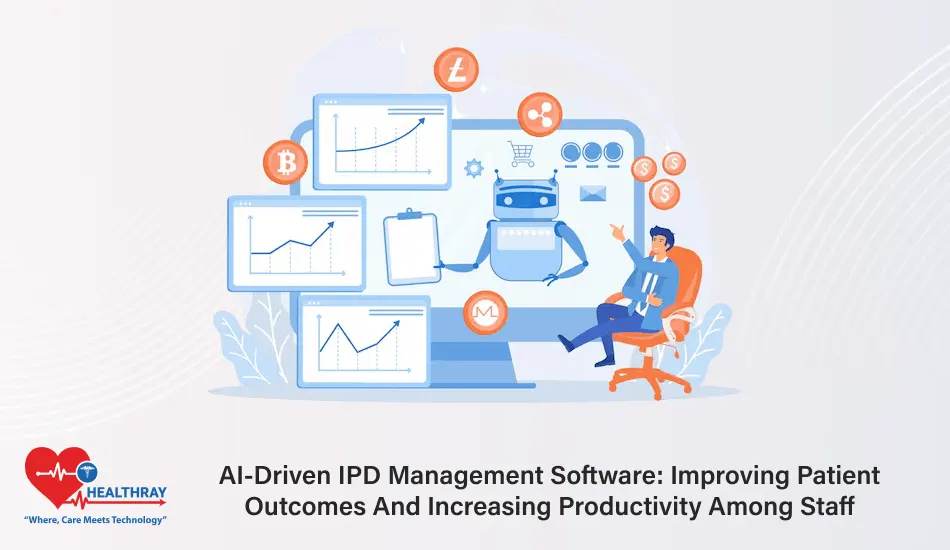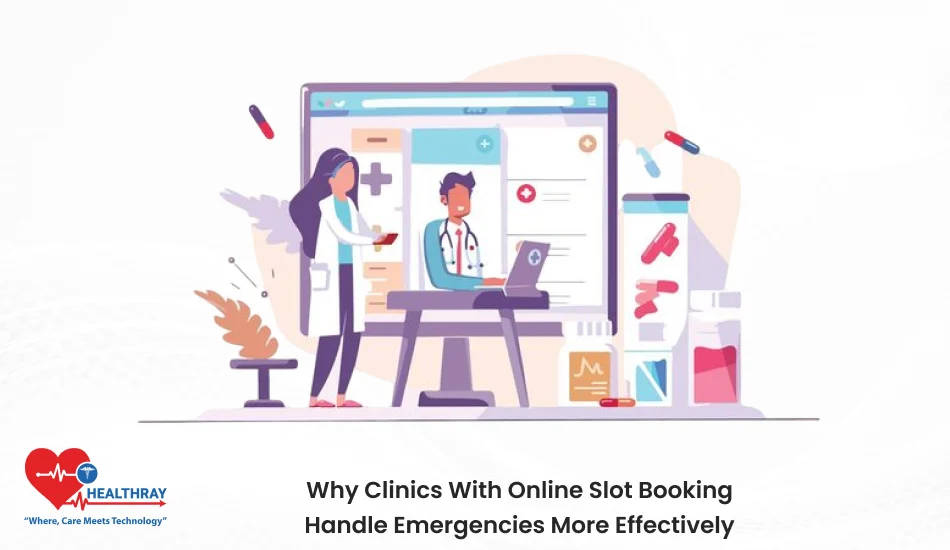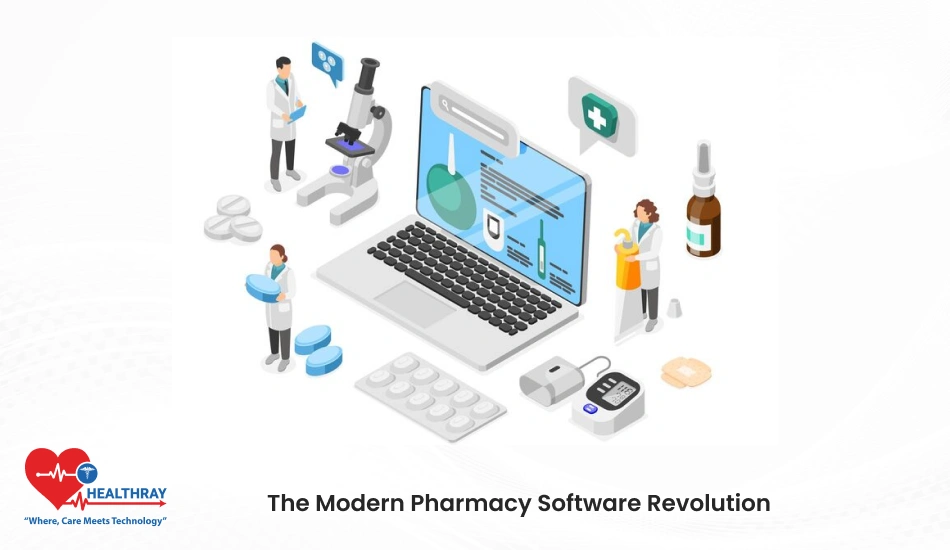Artificial intelligence is changing healthcare, as it brings more precision and speed to a great number of aspects in the treatment process. It also influences the administration of IPDs heavily, since such departments often face heavy patient traffic, complex logistics, and the challenge of delivering excellent care while preserving productivity among the staff.
AI-powered management software would likely introduce a paradigm shift to this field. These solutions further alleviate the burden on hospitals by streamlining workflows, automating mundane tasks, and providing actionable insights to improve outcomes related to both patients and staff.
This article shows how the technology has improved patient outcomes and increased staff productivity. You will also find a well-rounded view of the opportunities and challenges associated with AI implementation in IPD management Software, from real examples to wider insights.
Understanding AI-powered IPD management software
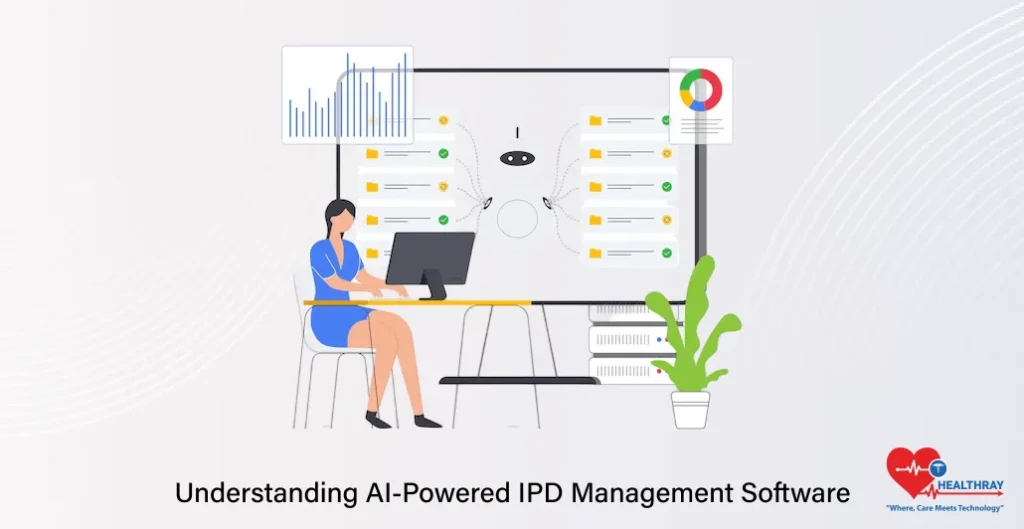
Advanced technologies, such as machine learning, predictive analytics, and natural language processing, formed part of the AI-powered IPD management software, further enhancing the functioning of the hospitals. These tools have been developed to address the challenge of inpatient care, which involves timely decisions along with efficient coordination.
Key Features of AI-driven IPD Management Software:
1.Real-time Data Insights: It captures data from the patients in real time. It gives a granular view into bed availability, patient status, and resource utilization.
2.Predictive analytics for patient care: AI interprets the historical data combined with ongoing health metrics to predict patients’ needs for complication prevention, minimizing readmissions, and improving recovery rates.
3. Automated operations: It automates routine tasks that include bed allocation, discharge planning, and staffing scheduling. Thus, workflow can be automatically optimized through shortening the delay times by minimizing human error.
4.Integration with existing systems: Most of the solutions are easily integrated with the current HIS, electronic medical records, and other tools, hence ensuring smooth information flow.
5.Data Security and Compliance: Strong encryption of sensitive patient data; adherence to health care regulations, such as HIPAA.
Key Ways AI Improves Healthcare with Ipa tools: Streamlining, Efficiency and Enhancing
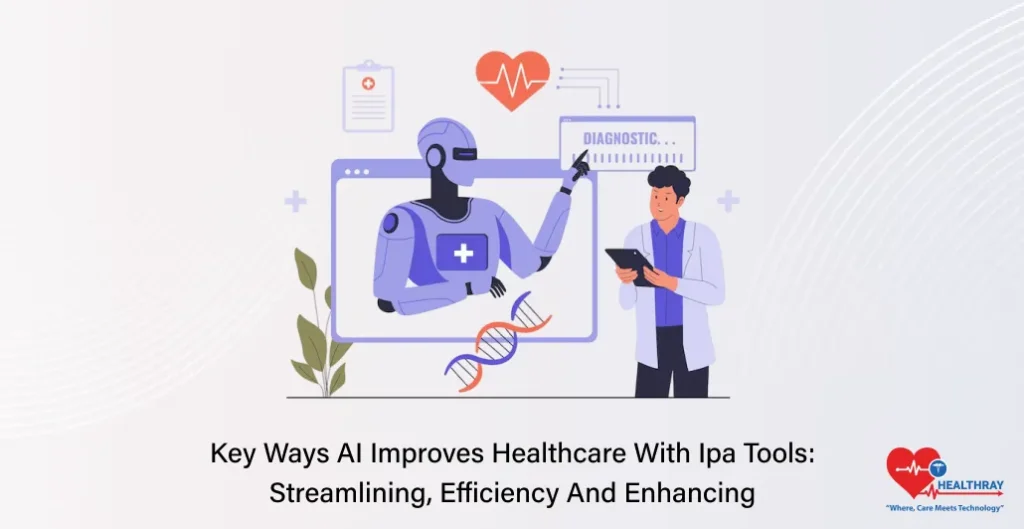
1.Automation of Administrative Tasks: Scheduling, documentation, and processing of discharge fall within the scope of automation. It frees health professionals’ time to attend to their clinical duties.
2.Optimized Staff Scheduling: AI systems analyze the trend in patient inflow and the availability of staff to create optimized schedules. This makes sure that at the peak times, the right number of staff members is available to reduce burnout and improve efficiency.
3.Improved communication and coordination: the integrated platform updates all the statuses regarding patients, bed availability, and task assignments in real time. This reduces delay incidents in any processes arising because of miscommunication or lack of information.
4.AI tools support :care staff with evidence-based recommendations on patient care. For instance, predictive models can recommend the right time for escalation in caring for those patients who are at risk. It will reduce the cognitive load for medical teams.
5.Eliminating Human Error: AI reduces errors in the administration of medications, in discharge summaries, and many other areas of importance by automating calculations, reminders, and routine checks.
A Real-Life Example:
The AI-based scheduling system introduced in a medium-sized hospital ensured proper distribution of workload into shifts, reduced overtime hours by around 25%, and improved morale among staff. A cost-benefit analysis is an essential determining factor behind blockchain-enabled implementation. Even though the first major investment looks huge, in the long run, operational efficiency, lowered costs, and good patient outcomes give back good ROI for healthcare institutions.
Costs Of Implementation:
1. The initial investment: Software purchase, hardware upgrades, and system integration.
2. Training and onboarding: For an uninterrupted transition into implementation, staff training would be an essential part of this whole process. Some extra resources for workshops and tutorials may need to be applied for this purpose.
3. System updates and upgrades: The packages will ensure compliance while keeping the system fully functional. The support will be offered on a permanent basis.
4. Customization: Many hospitals go in for the customized solution by adding to the price with the assurance that the software meets their specific requirements.
Long-Term Advantages:
1. Lower operational costs: Automation reduces administrative costs, while predictive analytics reduce unnecessary tests and treatments.
2. More capacity: The adjustments of patient turnover ratios, along with more efficient resource utilization without any additions of new infrastructure, have freed up each of the hospitals to service more patients.
3. Diminished Staff Turnover: Better and more efficient workflows and less burnout will keep staff happier and reduce the future costs of turnover or hiring.
4. Fostering Improved Patient Outcomes: With better care coordination and fewer errors, fewer costly complications and readmissions are directly impacting financial performance.
5. Regulatory Compliance and Reduction of Risks: AI is an effective way ensure adherence to standards established in healthcare, thereby reducing risks associated with financial penalties or lawsuits.
Return on Investment Insights:
Thus, it is no surprise that hospitals with AI-enabled solutions get their ROI within anything between three to five years, while operational costs drop by as much as 20%. In fact, the intangible benefits of having more satisfied patients and staff would justify this investment by many times.
Challenges and Considerations
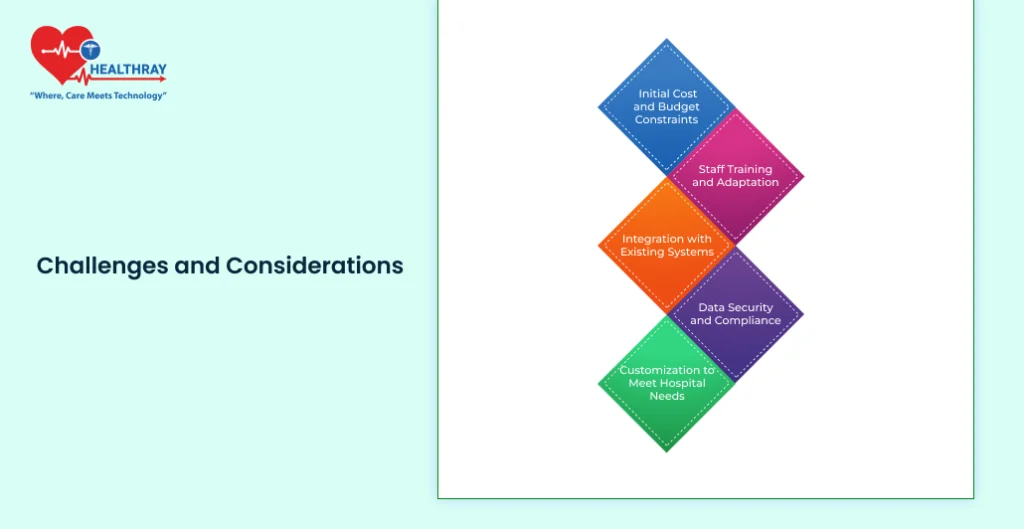
There are many great benefits of using AI-powered IPD software, but with them come various challenges. Understanding such obstacles along with ways to overcome them will be key in ensuring successful technology deployment.
Main Challenges
1. Initial Setup and Integration: Integrating AI tools into already existing systems of the hospitals, either through electronic medical records or via the Hospital Management System, is much more elaborate. Compatibility issues may call for more time to customize.
2. Initial Costs: In some cases, high costs related to software and hardware, along with required training, can be too high for small resource-limited hospitals.
3. Data Privacy and Security: Handling sensitive patient data thus implies responsibility to meet the most stringent standards of security and regulatory requirements, including HIPAA or GDPR.
4. Resistance to Change: In general, the commonest resistance toward new applications will come from some fear of displacement or extra workload during transition.
5. Data Reliability Dependence: AI totally relies on the quality of data, as well as structure. Poor quality will either give you wrong predictions or efficiency.
6. Maintenance and Technical Support: The system is for sure going to have some random updates and maintenance through its life. It should keep being this smart and compliant by extending its alt operational cost.
Considerations for Successful Implementation:
1.Stakeholder buy-in: It’s not just about stakeholder buy-in but about communicating the benefits of AI at every level-from administrative leadership to bedside staff.
2.Pilot Tests: This will give the hospitals a chance to test pilots, pinpoint problems, and adjust any changes before full-scale deployment.
3.Training: and support for staff would give opportunities for extended training programs in the use of AI tools, and their concerns will be catered for, building up confidence within staff.
4.Vendor Selection: The choice should be made for a vendor whose reputation will be stable and established in healthcare solutions and assured easy integration, including long-term assistance.
5.Monitoring and Feedback: Regular monitoring will allow for the incorporation of user recommendations for process improvement keeping solving emergent issues at the fore.
Conclusion
AI-driven IPD management software brings a sea change in the operations of hospital software by greatly improving the productivity of the staff and the outcomes of the patients. These tools offer incredibly accurate solutions to the intricacies of inpatient care through automating repeat operations, smoothing workflows, and offering predictive insights. Benefits accruing to the hospital will be in the form of personalized care plans, less burnout among staff, and faster admissions of patients. Long-term benefits will be improved experiences of patients and operational efficiency, outweighing difficulties though initial expenses and data security have to be considered.
